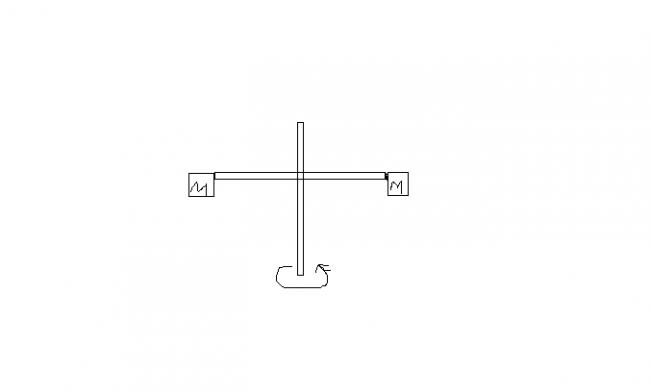 1
1the centripetal force require for circular motion is mv2/r
so this centripetal force is provided by tension force
mv2/r=t v=√tl/m
if masses are m1 and m2 then centre of mass from axis of rotation is x=(M1L - M2L)/M1 + M2 .
t=(M1 + M2)v2/x
v=√xt/(M1 + M2)
 1
1i dont have the ans .someone pls verify the ans
 1
1lalit i dont know why but theres no flaw in ur answer
but lets try to solve the sum withouth cm concept
then T=m1w^2r
and T2=mw^2r
so we r getting t1 and t2 as differnet since it is a rod
pls correct me if i am wrong there can be differnet tensions so in each part we hv to check that whether t is greater than t0
it sounds absurd........ doesnt it
anyways i am trying to find a flaw in either my argument or lalits but cant so pls help out
 1
1Consider one block having angular velocity W.
Then V= L W.
Acceleration towards the centre is V2L.
Multiply this by mass of the block, and you get centripetal force.
The rod breaks if this force exceeds tension.
Hence,
T = M V2L
So, V = √(L TM) is the maximum velocity it can be rotated.
W = VL = √(TM L) is the maximum angular velocity it can be rotated at.
